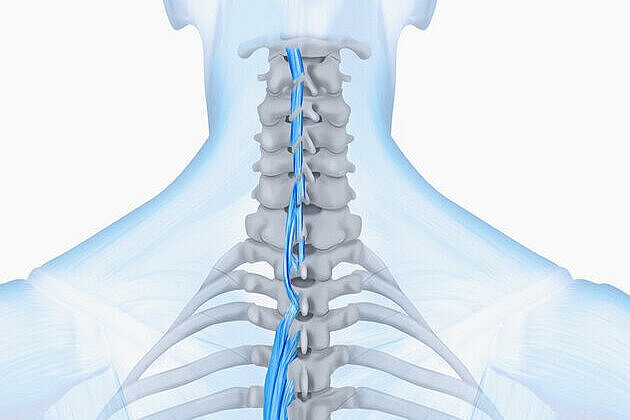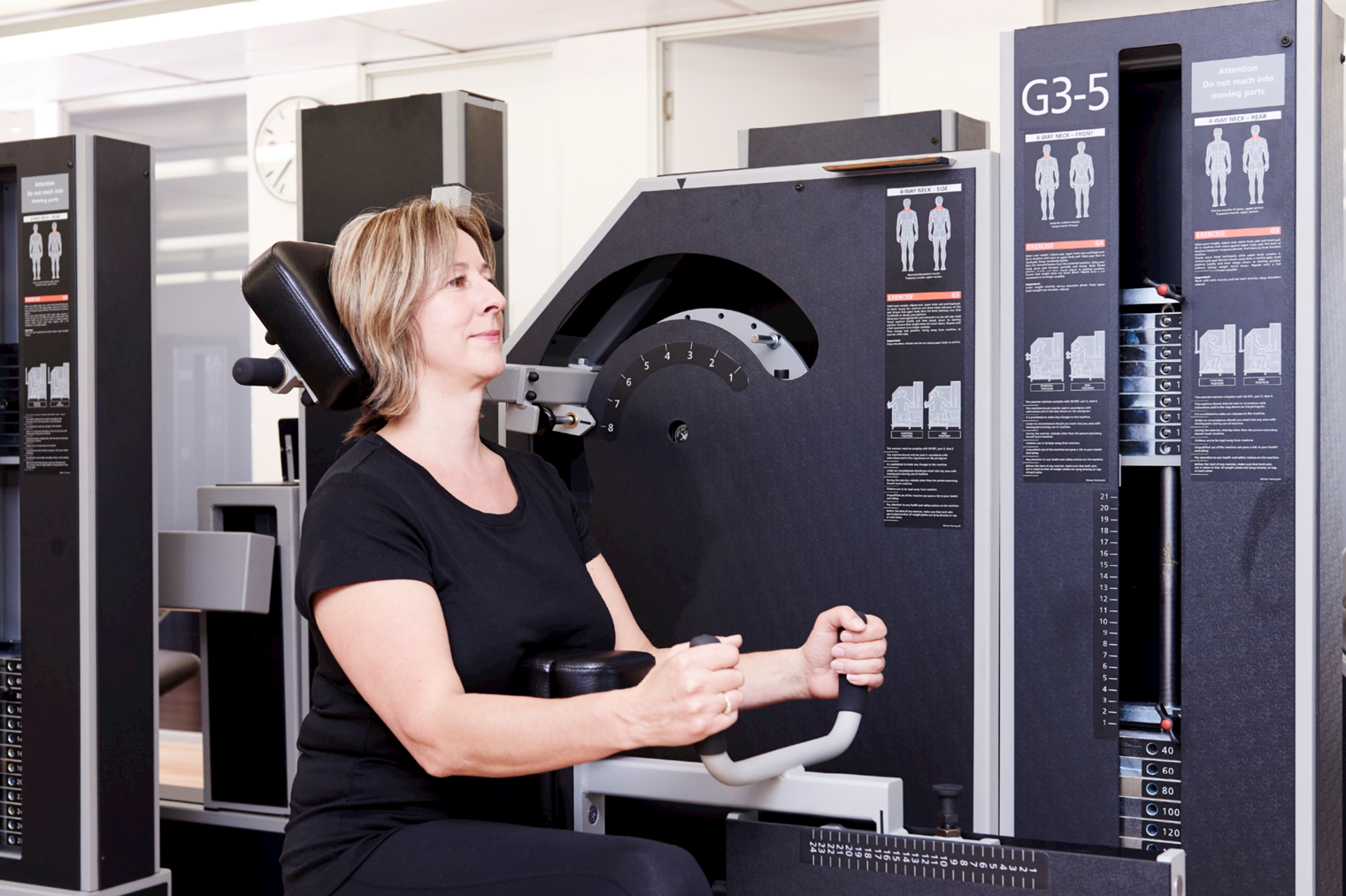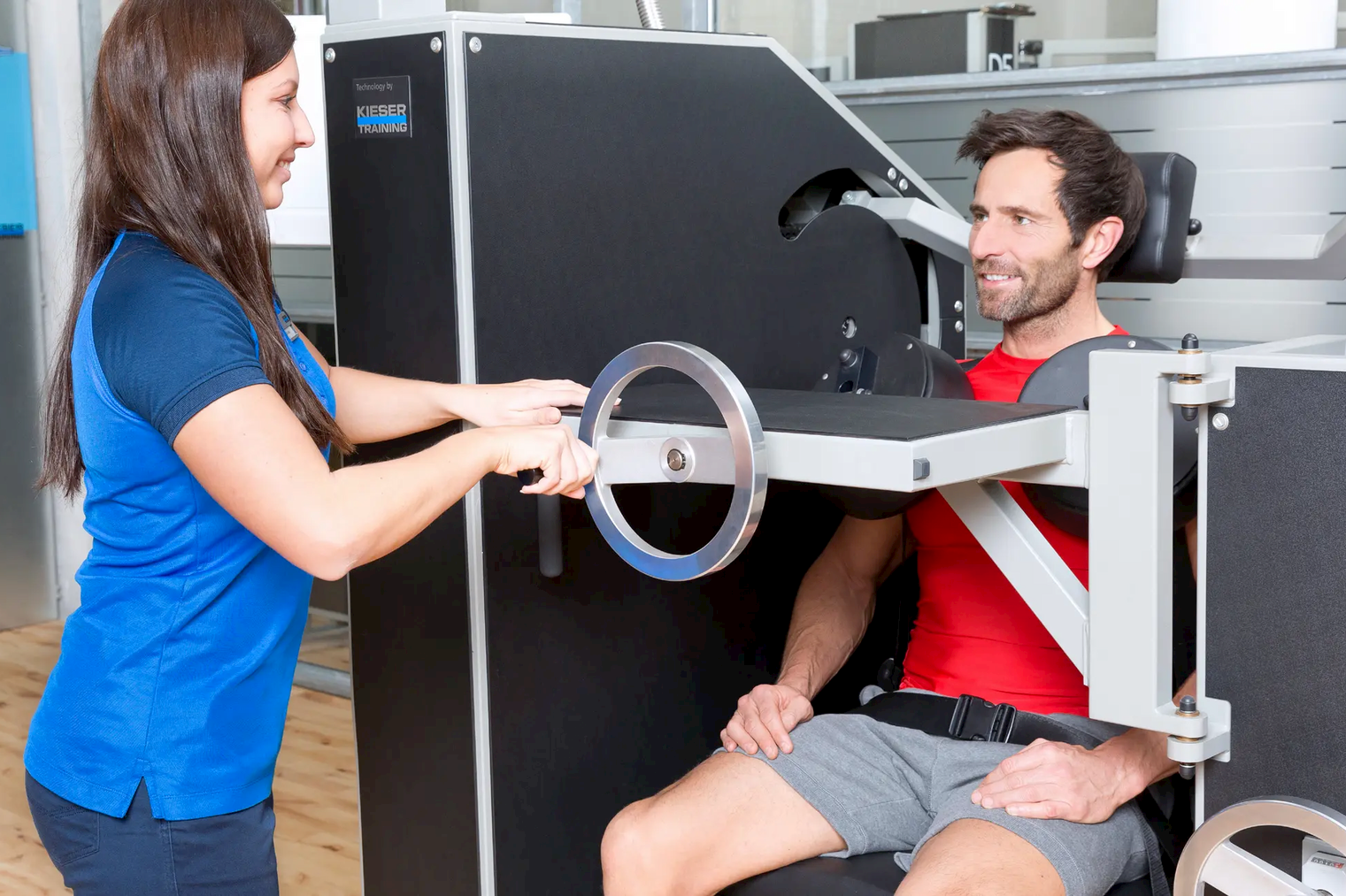Understanding neck pain and its causes

Neck pain arises from multiple factors, including poor posture, injuries (like whiplash), arthritis, or disc issues. Weakening of neck extensor muscles is a key contributor. These muscles, part of the spinal extensor group, run along the spine from head to sacrum, supporting everyday activities like using a keyboard or checking your car's mirrors. Over time, age and poor posture can cause neck extensor muscle weakness, resulting in pain and a higher injury risk.
Neck pain: types and symptoms
Weakness in the muscles of the neck can result in a variety of symptoms depending on the underlying cause and the severity of the condition. Some main symptoms associated with neck weakness are pain, stiffness, headaches and muscle spasms.
Physiotherapy and strength training programs at Kieser can be beneficial for clients with a variety of neck conditions including:
- Herniated discs of the cervical spine
- Facet joint disorders
- Headaches
- Arthritis (cervical spondylosis) or cervical osteoarthritis
- Non-specific neck pain
- Radicular arm pain
- Pre and post neck surgery
- Overall neck deconditioning
Risk factors for neck pain
Neck pain risk factors include poor posture and prolonged sitting, straining neck muscles. Extended sitting in non-ergonomic settings, as in jobs or activities, can strain neck and shoulder muscles. Aging brings spinal degeneration like osteoarthritis and disc disease, contributing to neck pain. Maintaining neck muscle strength reduces the risk of degenerative conditions. A sedentary lifestyle and lack of physical activity weaken neck-supporting muscles, making them prone to strain and injury. Understanding these factors can help individuals make preventive adjustments to reduce the likelihood of neck pain.
Benefits of Physiotherapy for neck pain
Physiotherapy can be highly beneficial in the management and treatment of neck pain. Physiotherapists at Kieser will perform a thorough assessment of your condition and provide a diagnosis for the cause of your neck pain. Our Physiotherapists utilise a number of techniques such as manual therapy, joint mobilisation, soft tissue mobilisation, and strength building exercises to reduce pain and improve range of movement.
Exercises to reduce neck pain
At Kieser we offer a number of specific strength training exercises to help manage neck pain. These exercises include:
- CE (Cervical Extension) - Weighing in at 730kg, Kieser's CE machine is the showpiece of all neck machines. The machine allows the neck extensor muscles to be strengthened in isolation which is normally very difficult to achieve using standard strength training equipment.
- G5 (4 way neck - rear) - This exercise involves training the spinal extensors and the trapezoid muscle. In this exercise, you place the back of your head in the pad and push it slowly backwards.
- G1 (neck and sholder) - The G1 exercise isolates and strengthens the upper trapezius muscle of the neck. This exercise is often used to rehabilitate shoulder movement and retrain proper shoulder movement patterns.
- G3 (4-way neck - side) - The sternocleidomastoid muscles are the two large muscles located at the front of the neck. These are the muscles most often injured during whiplash and as such can cause a number of symptoms and refer pain to many areas of the upper body.
- G4 (The 4-way neck - front) - The G4 exercise plays an important role in overall neck strength and posture. This exercise can help those with multi directional weakness and instability in the neck. It can be beneficial for those with neck pain, headaches and especially those who have experienced whiplash.
Posture and ergonomic tips for neck pain
Poor posture is a common contributor to neck pain. Physiotherapists can assess and address postural imbalances and provide guidance on proper ergonomics to reduce strain on the neck and improve overall posture. Some ergonomics tips for a sitting work station include:
- Ensure your forearms are approximately horizontal and keep your shoulders relaxed
- Sit so that your chair is supporting whole of spine
- Your back rest should be slightly reclined to 10-20° from vertical
- Sit so that the distance to your screen is approximately arm’s length
- The top of your screen should be at approximately eye level
- Your screen, doc holders and keyboard should all be centrally aligned
- Ensure your knees are at approximately right angles and your feet are supported (preferably on floor)
- Keep a small gap (two finger widths) between the back of your knee and the front of the seat base

Get started with a Physiotherapist for neck pain

To get started with a Physiotherapy and strength training program for neck pain, contact your local Kieser clinic and schedule an initial assessment with one of our experienced Physiotherapists. Our programs are appropriate for clients with a wide variety of neck and spinal conditions.
Booking your initial assessment with a Kieser Physiotherapist
To receive a treatment plan to manage neck pain, book your initial Physiotherapist assessment online here. Your Physiotherapist will start by performing an assessment of your current condition and providing a diagnosis for the source of your neck pain. Where appropriate, we may also perform an objective strength test on Kieser's Cervical Extension machine. This test provides an objective measure of your neck extensor muscles which we use to determine the starting level for your program. Strength testing is also conducted at the end of your program as a means of objectively measuring your strength gains.
